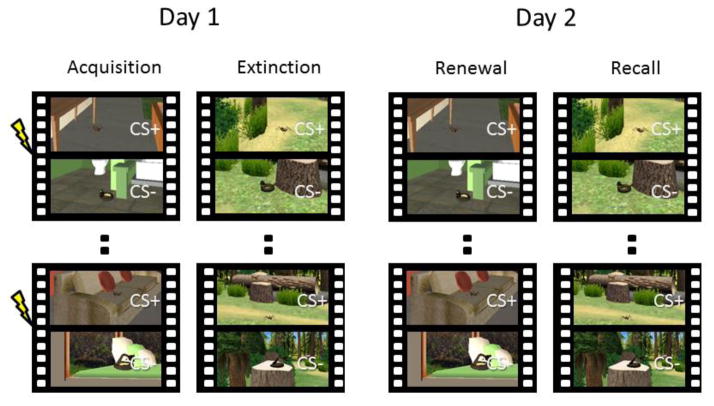Figure 1.
Experimental design. Participants were conditioned to dynamic cues (spiders or snakes) while travelling through a virtual reality environment (indoor or outdoor) presented in 3-D goggles. The fear cue was paired with shock on 5 out of the 16 trials (CS+) whereas the safe cue (CS−) was never paired with shock. Participants were not informed about which cue would serve as CS+ and CS−. Fear was extinguished in another environment following conditioning. Twenty-four hours later, responses to the fear cue and the safe cue were tested in the original acquisition context (Fear Renewal context) and the extinction context (Extinction Recall context), with presentation order counterbalanced between subjects. Trials were divided into Early (trials 1–8) and Late (9–16) phases for analysis purposes to map gross temporal dynamics in responses over time (not shown). CS, conditioned stimulus.

